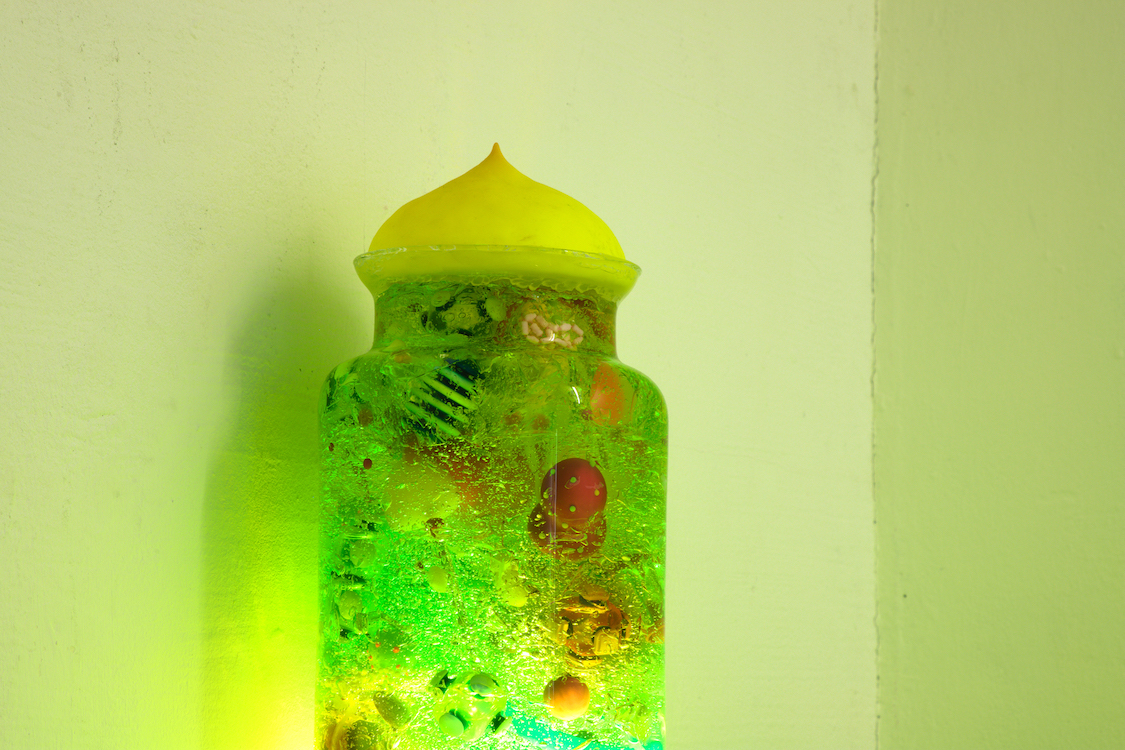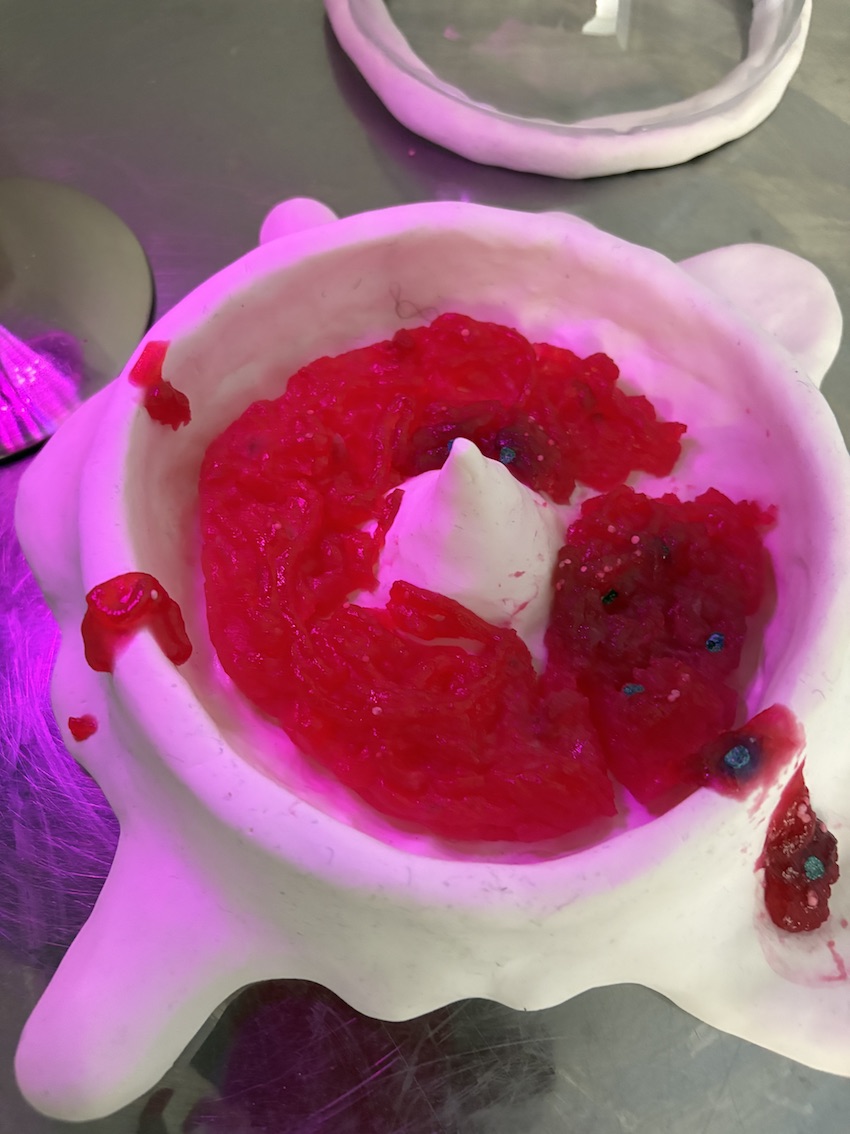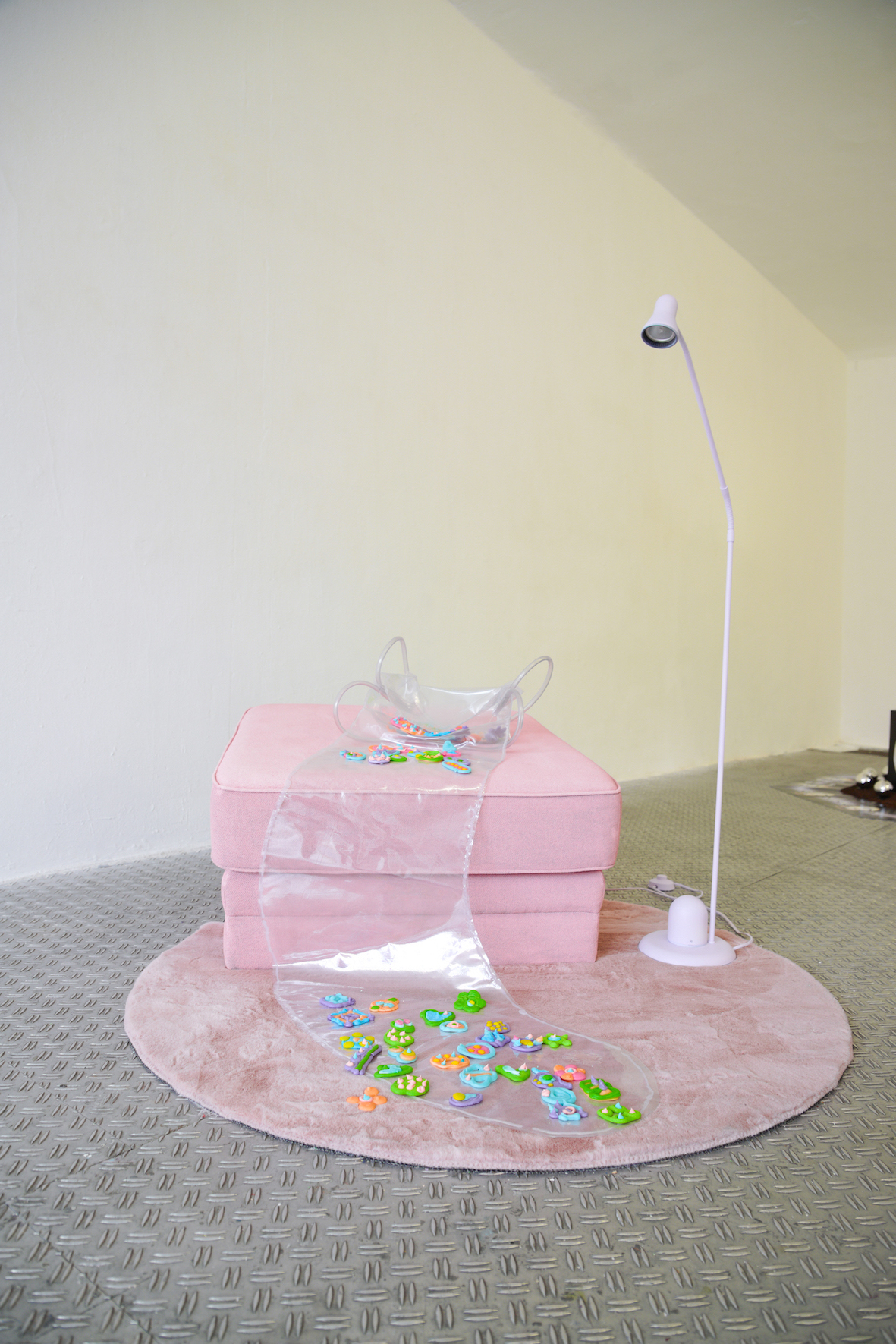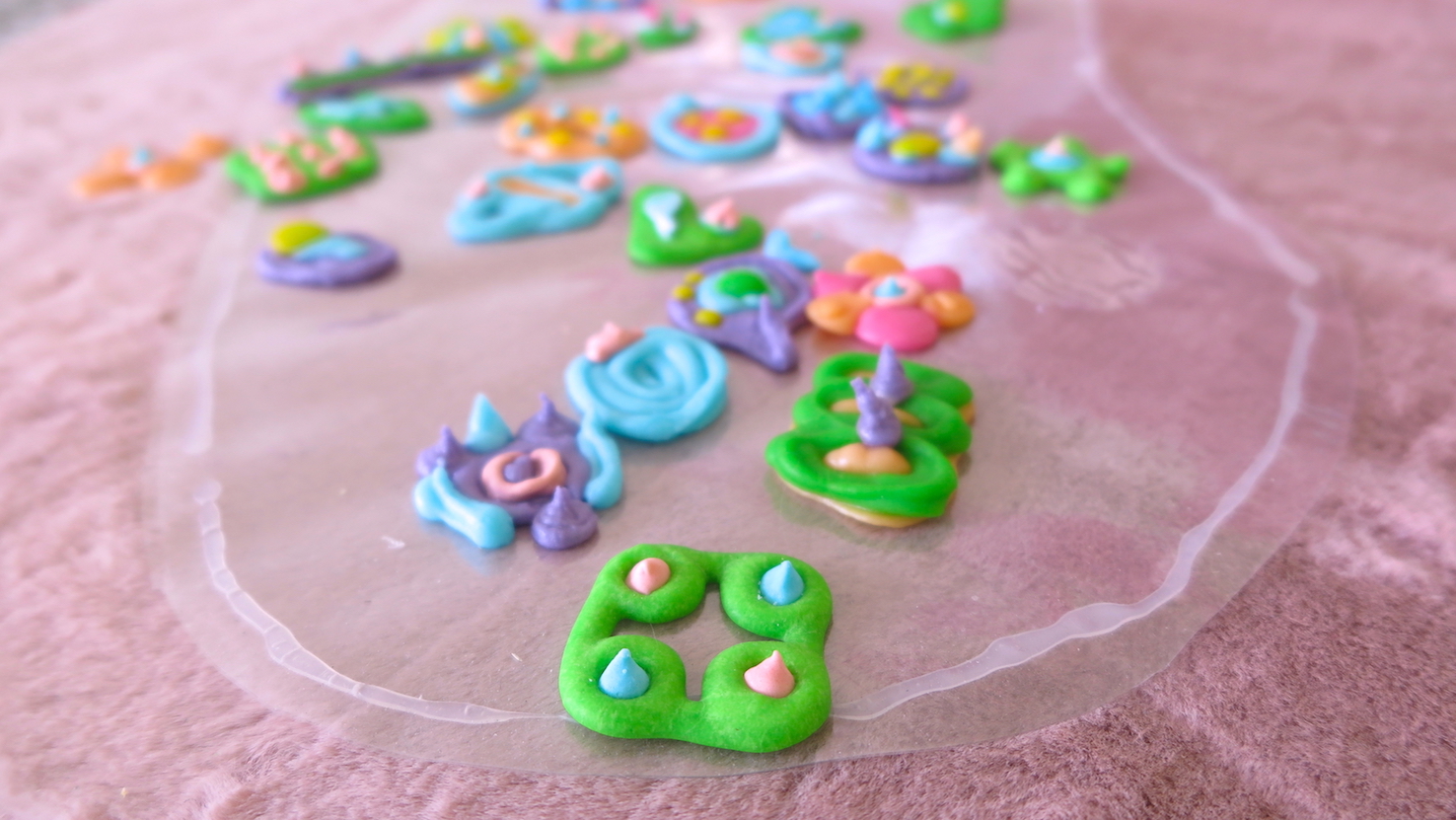Candy Boxes



Ask, for permission first.



I will take it, when no one is watching.



You, can have 3 big ones.
Candy Boxes2025
sugar, lampshade, carpet, sofa, plastic blanket, food coloring, corn syrup, cornstarch, table, lamp, glass, gel, buttons, hot glue, rubber, towel, shelf
Sign, project space, Groningen
When I think about objects in space and their significance and relationship with people, I recall the candy boxes from my childhood. Each one of my grandmothers had “hidden candy” in specific places around the house. As children, we could only access these treats with permission, often as a reward after a meal or for good behavior. These containers took various forms: some were ornate and grand, like a large crystal jar with a pointed lid, while others were simpler, such as an old chocolate box with a faded illustration of children playing.
One of my great-grandmothers as this large handbag that had these gigantic gummies in a wrapping paper. This bag, unlike the others, was never stationary; it was a movable object, always shifting locations within the room.
On a high shelf, out of reach, these candy containers were objects of mystery and desire. They were magical, hidden treasures that protected their contents from children's fingers. While the children were the primary audience, adults also saw these containers as objects of fascination. For me as a kid, they represented a treasure chest that I could almost imagine a a especial glow around it, like in the cartoons.
A woman’s handbag filled with candy, for example, became a tool for fostering interaction between adults and children. It symbolized a shared love of sweetness and the power dynamics of permission and reward. This dynamic, paired with the natural allure of sugar, created a unique relationship between the object, its contents, and its audience.
sugar, lampshade, carpet, sofa, plastic blanket, food coloring, corn syrup, cornstarch, table, lamp, glass, gel, buttons, hot glue, rubber, towel, shelf
Sign, project space, Groningen
When I think about objects in space and their significance and relationship with people, I recall the candy boxes from my childhood. Each one of my grandmothers had “hidden candy” in specific places around the house. As children, we could only access these treats with permission, often as a reward after a meal or for good behavior. These containers took various forms: some were ornate and grand, like a large crystal jar with a pointed lid, while others were simpler, such as an old chocolate box with a faded illustration of children playing.
One of my great-grandmothers as this large handbag that had these gigantic gummies in a wrapping paper. This bag, unlike the others, was never stationary; it was a movable object, always shifting locations within the room.
On a high shelf, out of reach, these candy containers were objects of mystery and desire. They were magical, hidden treasures that protected their contents from children's fingers. While the children were the primary audience, adults also saw these containers as objects of fascination. For me as a kid, they represented a treasure chest that I could almost imagine a a especial glow around it, like in the cartoons.
A woman’s handbag filled with candy, for example, became a tool for fostering interaction between adults and children. It symbolized a shared love of sweetness and the power dynamics of permission and reward. This dynamic, paired with the natural allure of sugar, created a unique relationship between the object, its contents, and its audience.